- Home
- Wildlife in the UK
- Bird Feather Patterns
Guide to Bird Feather Patterns
Bird feather patterns are the key that turn casual birdwatching into confident identification.
In this guide to bird feather patterns, you’ll learn how camouflage, structure, colour and seasonal change all show you who a bird is and how it lives.
By focusing on the details in each feather, every walk becomes a richer conversation with the birds around you.
The Secret Language of Camouflage
Feather patterns serve first as survival tools, and camouflage patterns are masterclasses in deception. Understanding these patterns helps us appreciate both their function and identify the birds that wear them.
Take the woodcock. Its feathers display a breathtaking mix of scaly, scalloped patterns in russet and brown, designed for one purpose: to mimic leaf litter perfectly. Even when you know they're there, your eyes slide right over them.
Ground-nesting birds take this invisibility to extraordinary levels. I remember searching for a nightjar on heathland, scanning until my eyes ached. Then, a patch of what I thought was bare earth blinked. The bird's mottled, blotchy plumage didn't just look like the ground, it was indistinguishable from it.
The bittern demonstrates the pinnacle of this camouflage artistry. Standing bolt upright in a reedbed, beak to the sky, its streaked, reedy pattern allows it to simply vanish. Learning to spot these vertical streaks against reeds becomes a valuable identification skill that rewards patient observers.
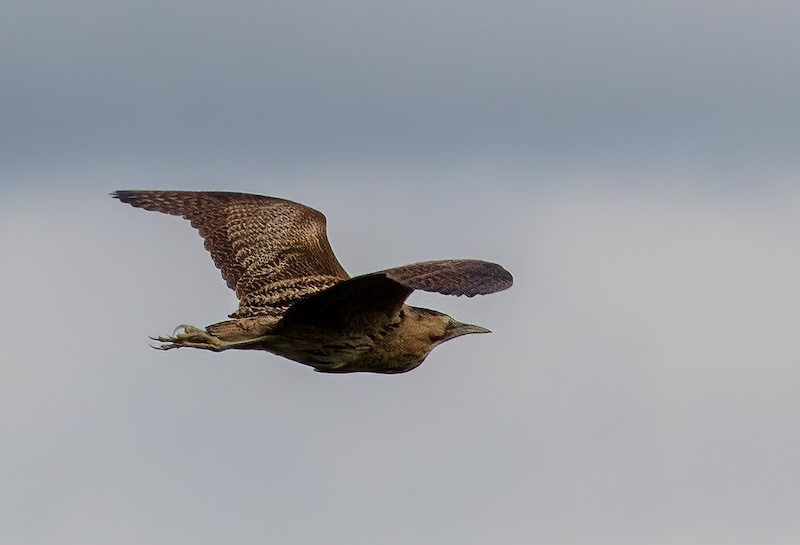 When flying against the sky the bittern is clearly visible. But against reeds?
When flying against the sky the bittern is clearly visible. But against reeds?Reading the Feather Wardrobe
Understanding feather structure helps us identify both the patterns we see and the birds that wear them. Birds layer their feathers like a perfectly designed wardrobe, and each layer tells us something different.
The soft down feathers closest to the skin provide insulation—when you see a duck pulling feathers from her breast to line a nest, she's using this natural duvet material.
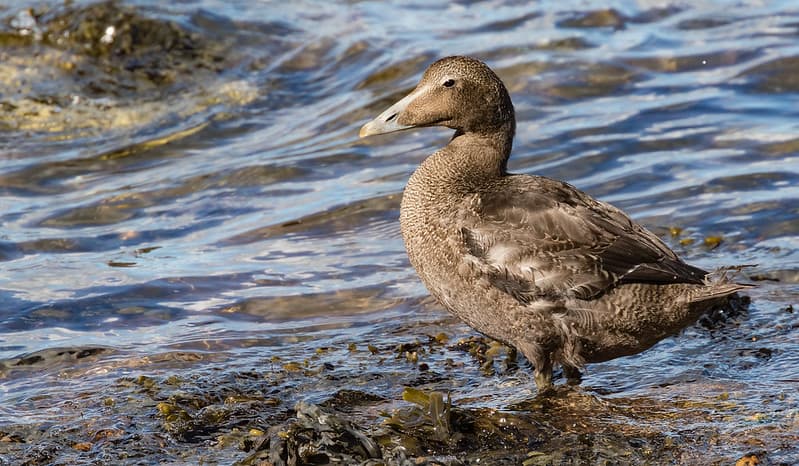 A female Eider duck whose down feathers provide both insulation and nesting material.
A female Eider duck whose down feathers provide both insulation and nesting material.But it's the outer contour feathers that carry the identification patterns we learn to read.
These contour feathers create the shapes that help us distinguish one species from another:
- Streaks: Smart pinstripes running down the body. The dunnock's subtle, earthy streaked pattern distinguishes it from similar-sized birds.
- Bars: Lines going across the feather. A sparrowhawk’s barred chest immediately identifies it as a hunter and separates it from other raptors.
- Spots: A perfect polka-dot fabric. The breast of a song thrush looks as though a tiny artist has carefully painted each dot.
Learning to see these specific patterns rather than just "brown bird" transforms every birdwatching encounter.
The Engineering of Flight
Flight feathers reveal both a bird's capabilities and help with identification. Think of the wing like an arm—this makes the feather groups easier to understand and spot.
At the wingtip, the long primary feathers (attached to the bird's "hand") provide thrust and often show distinctive patterns. The secondary feathers on the "forearm" create lift and frequently display the most striking identification features.
I was watching mallards one day when one opened its wings, revealing a shocking dash of iridescent blue on its secondaries—a patch called a speculum. This blue speculum is diagnostic for mallards, distinguishing them from other ducks even in poor light.
The smaller covert feathers smooth the wing's surface and often show patterns that help separate similar species. Finally, tail feathers act as rudders and brakes, with their shape and markings providing crucial identification clues.
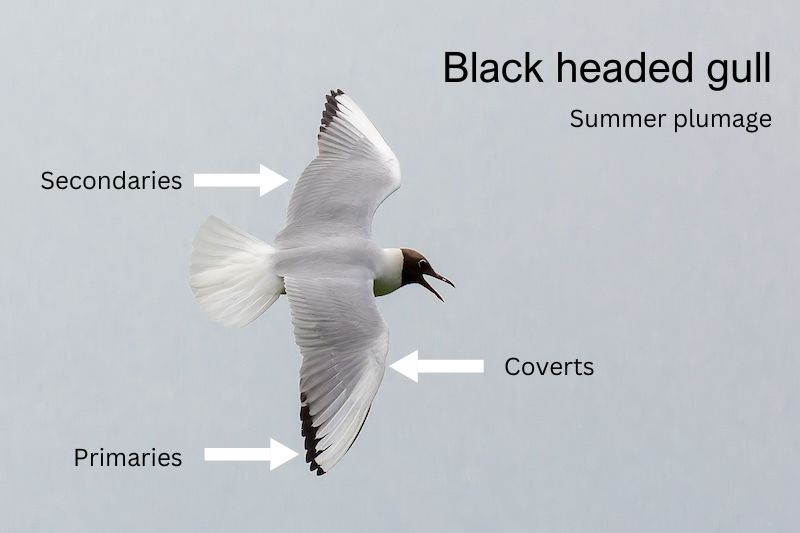 The primaries reach the bend in the wing
The primaries reach the bend in the wingTail Feathers (The Navigation System)
The tail feathers complete the flight system and provide crucial identification features.
These feathers act as rudders and brakes, helping birds steer, stabilize, and slow down with incredible precision.
I was once watching a red kite hanging in the wind, and I noticed its tail was never still—constantly twisting and fanning out, making tiny, precise adjustments in its silent, masterful negotiation with the wind.
Tail patterns and shapes are diagnostic for many species. The length, colour, and markings of tail feathers help distinguish between similar birds and reveal behavioral adaptations for different lifestyles.
The Drama of Display
Some feathers exist purely for show, and recognizing these display features aids identification while revealing breeding behavior. These specialized plumes help birds attract mates and establish territories.
A lapwing's wispy crest gives it unmistakable character—a bold statement that makes identification immediate even at distance. These plumes exist purely for attitude and social signaling, adding personality to the bird's profile.
Understanding when and why birds display these features helps predict behavior and improves identification success.
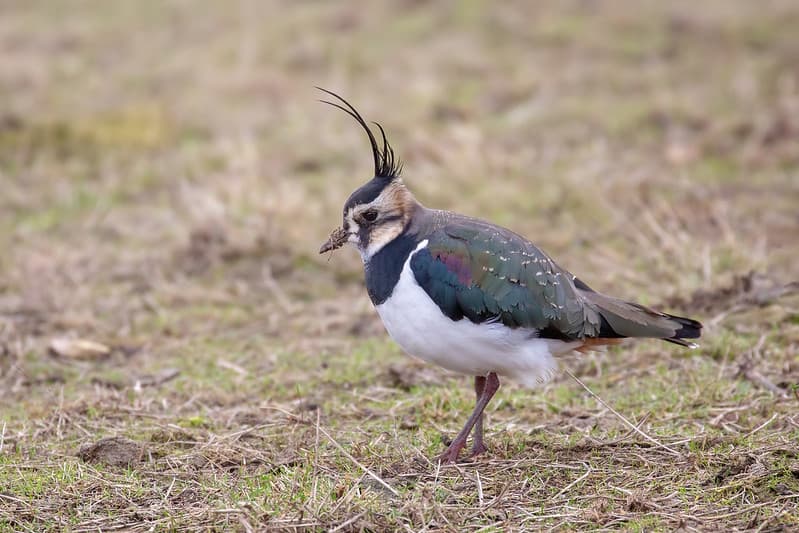 A lapwing showing the plumes on the head along with iridescent colours on the wing
A lapwing showing the plumes on the head along with iridescent colours on the wingThe Physics of Colour
Bird colours come from two completely different sources, and understanding this helps explain the patterns we see and use for identification.
Pigments create the stable, reliable colours—the deep black of a rook or the warm red of a robin's breast. These colours remain constant and provide dependable identification features.
But iridescent colours work differently. That shimmering, oil-slick colour on a starling's back or the dazzling green-and-purple on a magpie's tail comes from microscopic structures that act like prisms, shattering light into shifting colours.
Understanding this difference helps explain why some birds look dramatically different in various lighting conditions—crucial knowledge for accurate identification.
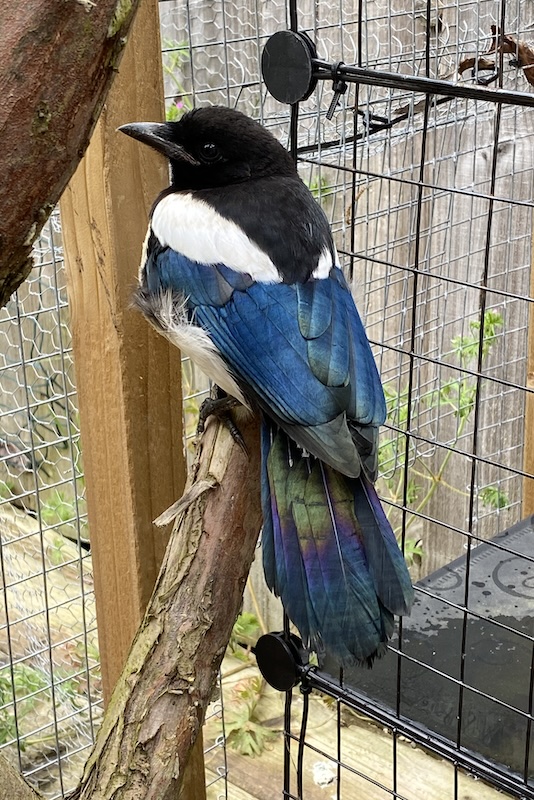 When the light catches a Magpie's "black" feathers they can look colourful
(photographed inside my neighbour's cat run)
When the light catches a Magpie's "black" feathers they can look colourful
(photographed inside my neighbour's cat run)Seasonal Pattern Changes
Feather patterns change throughout the year, and recognizing these variations prevents identification confusion. Young birds and molting adults can look completely different from field guide illustrations.
A fledgling robin demonstrates this perfectly. Instead of that confident red breast, young birds wear speckled, brownish camouflage—perfect for hiding while learning survival skills. The famous red chest only appears once they're mature enough to hold territory.
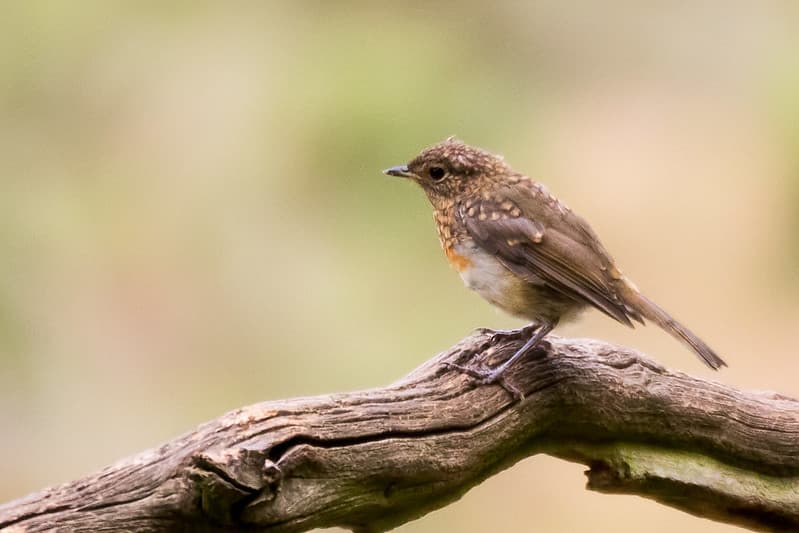 A young robin just beginning to gain adult plumage
A young robin just beginning to gain adult plumagethe annual moult
Late summer brings the annual feather replacement, when birds shed worn plumage for fresh patterns. This explains why the countryside goes quiet during this exhausting renewal period.
Ducks take this to extremes, dropping all flight feathers at once and entering "eclipse plumage", dull, cryptic patterns that aid concealment during this vulnerable period.
I still cringe when I remember spotting a mallard drake without his emerald head and becoming convinced I’d discovered a rare, exotic species. I shared my ‘find’ with the next visitor to the hide, trying to sound casual.
He gave me a kind, knowing smile. "Ah," he said gently. "That's just a male in eclipse." It took me ages to live that one down.
Putting Pattern Knowledge to Work
Understanding feather patterns transforms birdwatching from guesswork into informed observation.
Each pattern tells a story, the tired adult after breeding season, the camouflaged youngster, the displaying male announcing territory.
Next time you're watching birds, look beyond the whole bird to focus on specific feather patterns. Notice the mottled fabric of a female duck's coat, or the sudden flash of color from a wing patch. These details turn every encounter into a conversation with nature's secret language.
This pattern literacy enriches every walk and makes identification both more accurate and more enjoyable. You'll find yourself reading the stories written in feathers, understanding not just what bird you're seeing, but how it lives, survives, and thrives.
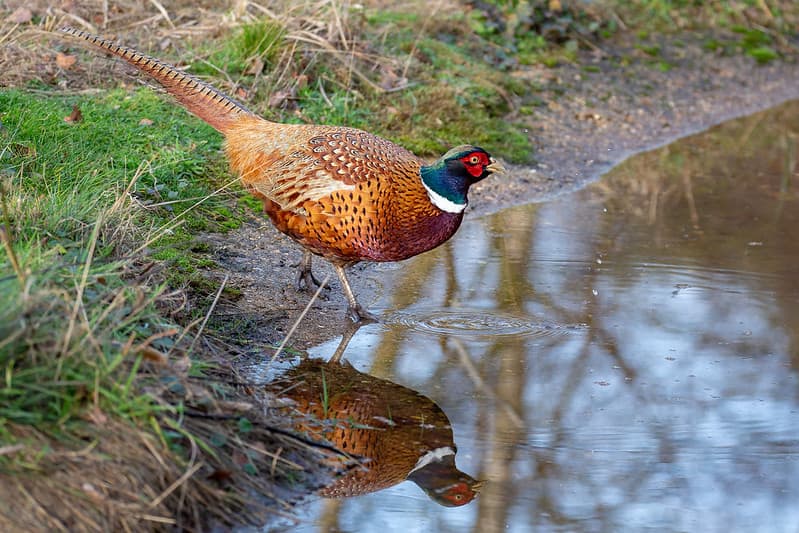 Male pheasant showing beautiful feather patterns
Male pheasant showing beautiful feather patternsLearn More About Identification
How to Identify Wild Birds - Ready to go beyond feathers? This guide will show you how to identify the birds you see by their shape, size, and even their behaviour.
What Bird is This? - Putting it all into practice, this simple guide helps you identify the common birds you're most likely to see right in your own garden.
Explore Other Bird Guides
Ducks in the UK - Think you know your ducks? Discover just how varied they are and learn how to tell them apart, even from a distance.
Woodland Birds - Take a peaceful walk through the woods and learn to spot the delightful birds that live there, from woodpeckers to tiny goldcrests.
Take the Next Step into Photography
Getting Into Wildlife Photography - If you've ever wanted to take better photos of the wildlife you see, this is the perfect place to start. I'll walk you through the basics—no fancy gear required.
How to Start Wildlife Photography - Learn how to plan your shoot, find wildlife, and compose beautiful photos—without the stress or overwhelm.

About the Author
For me, it’s never been just about bird names or camera settings, but the thrill of seeing a distant speck turn into a hunting kestrel.
After years of learning how to notice and photograph those moments, my camera has become the tool - and this site the field notebook - where I share what I’ve discovered.
If you’re ready to look a little closer, you’ll find the trips, lessons, and small wins that can help you see and photograph the wildlife right on your doorstep.
Step Behind the Wild Lens
If you’ve enjoyed your time here, you can also follow along by email.
I send the Wild Lens newsletter occasionally. It’s where I share:
- Fresh field notes and recent encounters
- The stories behind favourite photos
- Practical tips that don’t always make it onto the site
You’ll get new UK wildlife guides, photo tips, and ideas for your next walk, straight to your inbox.




